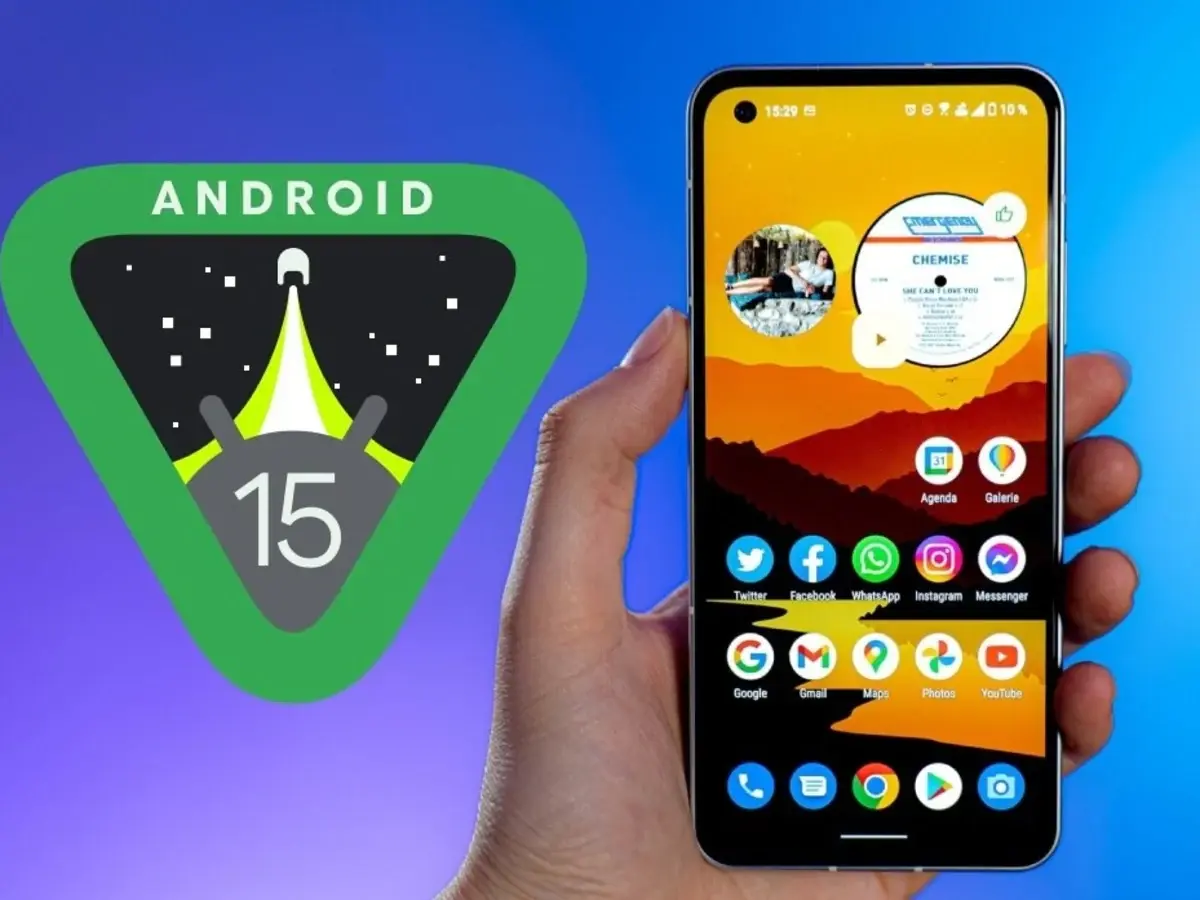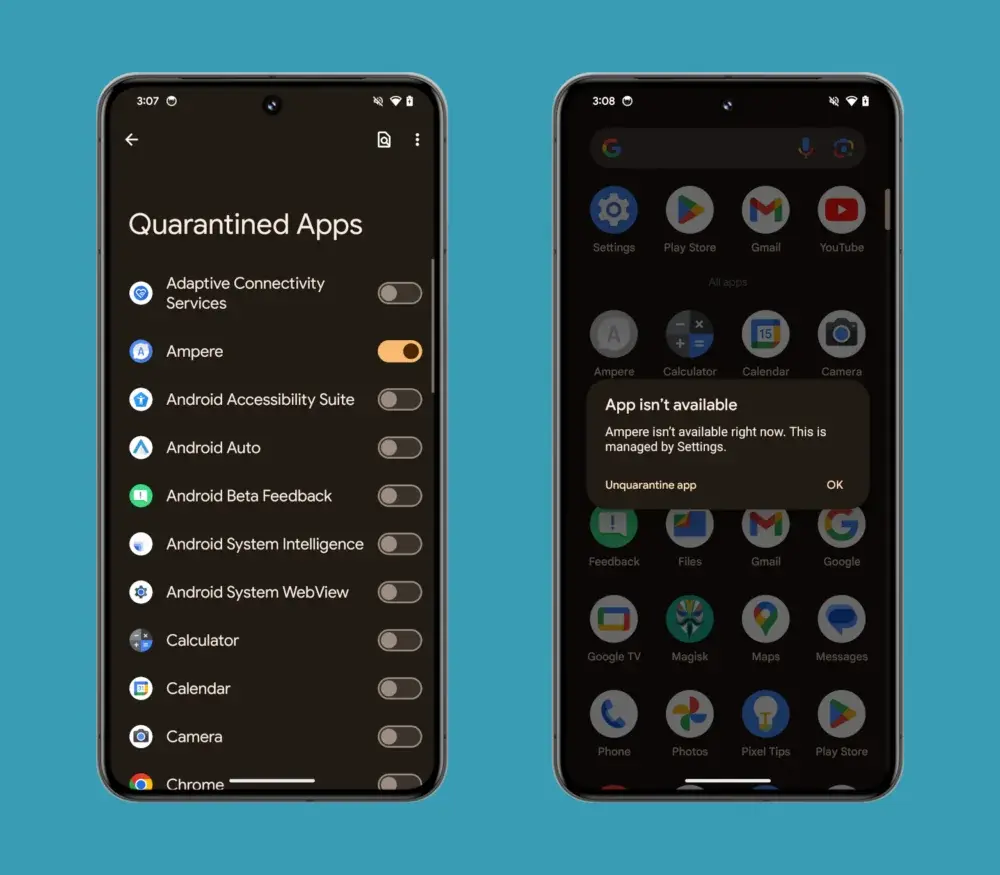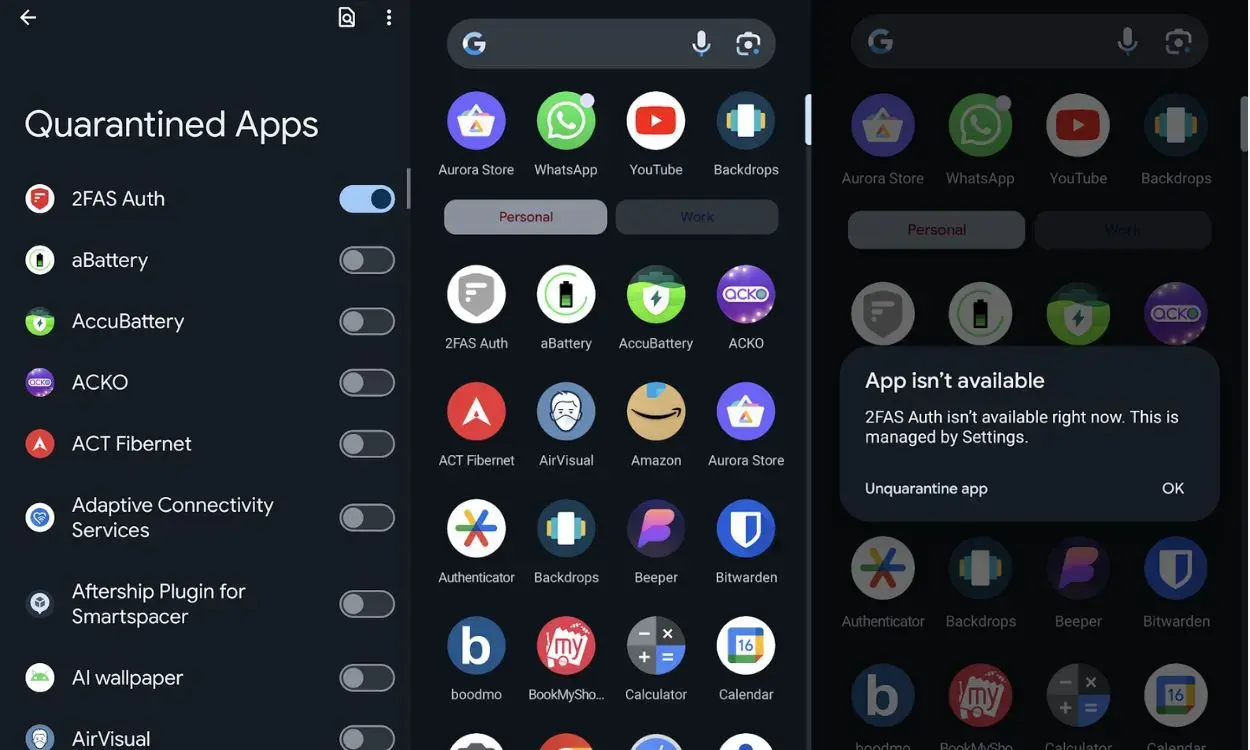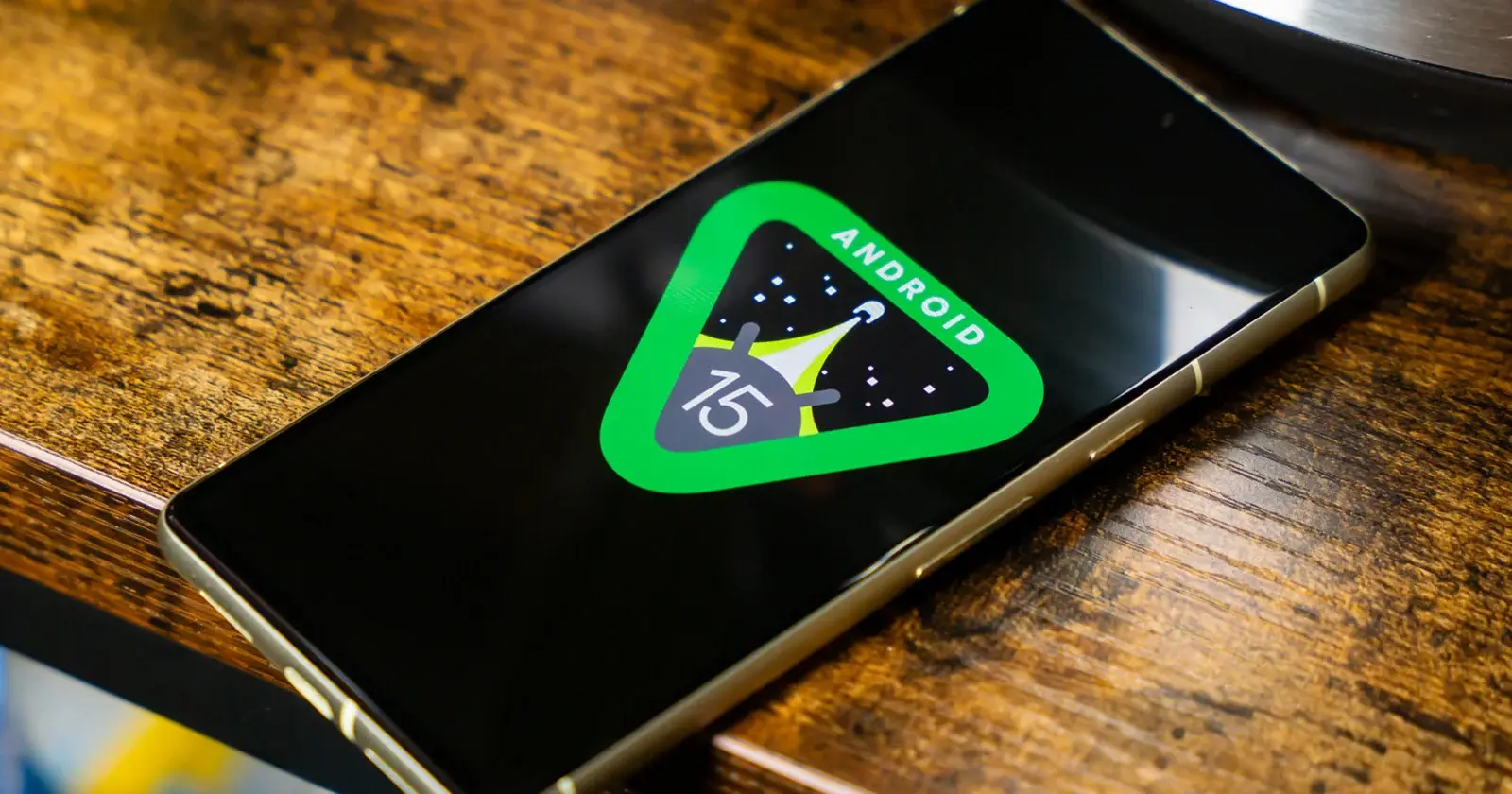The Android operating system is designed to offer strong protection against harmful apps. Despite this, occasionally some bad apps might still slip through. In such cases, Google Play Protect can step in. This service acts like an advanced anti-malware tool, though it isn’t perfect and can sometimes make errors in detecting threats. Usually, it prefers to be cautious, often asking users if they want to remove a potentially harmful app.
With the upcoming Android 15 update, there could be a new feature to enhance user protection against misbehaving apps: quarantining them. This means that instead of immediately removing an app that might be harmful, the system could isolate it, preventing it from causing harm while giving users time to decide whether it should be completely removed. This adds an extra layer of security, helping to ensure that your device stays safe.
What is Android 15 App Quarantine? 
If you’ve used antivirus software on desktop operating systems like Windows, you might be familiar with the concept of quarantining files. When antivirus software quarantines a file, it’s because the software suspects the file might be malicious. However, the antivirus may be unable to delete it automatically or might leave the decision up to the user because it’s not completely sure if the file is harmful. Quarantined files are isolated from the rest of the system to prevent them from being executed. This isolation helps ensure that any potential malware contained in the files can’t harm the system or perform any malicious actions.
Traditionally, the concept of quarantining software isn’t available in Android. Primarily because the operating system has the basic capabilities to secure against viruses. In Android, apps are unable to gain system-level access and are in sandbox by default, meaning each app operates in its own isolated environment. Furthermore, apps communicate with each other using well-defined Application Programming Interfaces (APIs) and can only access certain system features if they have the appropriate permissions granted by the user.
This robust security model reduces the necessity for third-party antivirus or anti-malware apps on Android devices. Given these differences in how Android and Windows operate, it’s understandable that any implementation of a quarantining feature in Android would differ from the traditional approach seen in Windows. This reflects Android’s unique architectural principles and its focus on maintaining tight security controls over app behavior.
How Will App Quarantine on Android 15 Work?

When an app is quarantined in Android, it remains visible on the user’s home screen launcher and in Android Settings, but it will have several restrictions on its operations to prevent any potentially harmful activity. Here’s how a quarantined app will behave:
1. Notifications: The app will not be able to show any notifications.
2. Activity Interruption: Any ongoing activities or windows from the app will be hidden and immediately stopped.
3. Device Ringing: The app will not have the capability to ring or vibrate the device.
4. Inter–App Communication: Other apps cannot query its services, though they may still be able to start its activities.
5. System and Broadcasts: It cannot bind to or receive broadcasts from the system or other apps.
6. Intent Disambiguation: The app won’t appear in intent disambiguation dialogs, which help users choose between apps for performing a specific action.
Quarantined apps thus operate under similar conditions to disabled apps, with the key difference being that disabled apps don’t appear in the home screen launcher. Quarantining is also akin to the suspension of apps by services like Digital Wellbeing, which pauses distracting apps; however, unlike simple suspension, quarantining can disable individual app components.
Does App Quarantine Suspend Apps?
In essence, the new quarantined state in Android acts as a middle ground between the existing states of suspending and disabling apps. This approach allows the system to control and minimize the potential threats from dubious apps while still giving users visibility and some level of control over the app in question.
Indeed, the process of quarantining an app in Android uses the same application programming interfaces (APIs) that suspends an app, but it involves an additional flag to indicate the quarantine state. During the testing and development of this feature, only system apps that had the SUSPEND_APPS permission were capable of quarantining other apps. However, updates to the methods have introduced a requirement for a new permission specifically for quarantining: QUARANTINE_APPS.
This QUARANTINE_APPS permission is under tight control. It can only work with the system’s “verifier” app or an app that has the same digital certificate as the operating system itself. This means that only highly trusted components of the Android ecosystem, such as Google’s Play Protect, have the capability to quarantine apps. Play Protect, integrated within the Google Play Store, plays a crucial role in scanning and ensuring app safety, and with this permission, it can effectively manage apps that pose potential risks by quarantining them. This mechanism ensures that only authorized entities within the Android environment have the power to impose such significant restrictions on apps, thereby maintaining system integrity and user security.
Android 15 App Quarantine Availability 
It’s unclear when Google will officially launch the app quarantining feature. The first signs of this capability appeared in Android 14 QPR2 Beta 1 back in November, indicating that development was underway. However, Google has removed the developer page dedicated to “Quarantined Apps”, which adds to the uncertainty.
Although the underlying feature flag that supports OS-level app quarantining is still in place, there currently isn’t a way to manually quarantine apps, not even through command-line operations. Furthermore, as of now, neither the Google Play Store nor Google Play Services, which are critical components of Google’s app security infrastructure, have requested the QUARANTINE_APPS permission. This absence suggests that the feature is not yet ready for implementation.
Given these developments, it’s entirely possible that app quarantining might not come together with the upcoming Android 15 release. Instead, it could see the light of day in a later version of the operating system, after the company completes all necessary testing and adjustments. This is to ensure it functions it should, without compromising user experience or system performance.
There Could be Some Few UI Changes 
When the app quarantining feature does officially launch, we can expect some refinements to the user interface. Apps that call the API to suspend or quarantine another app will have the ability to customize the dialog that appears when a user tries to launch an app that is under suspension or quarantine. This means that the system app responsible for implementing Android’s app quarantining feature will likely tailor the dialog to inform users with a clear message, such as, “[X] app has been quarantined for your safety,” accompanied by a reason for the quarantine.
This addition is significant. Although Android has history of having robust security features that do not necessitate a quarantine function, the implementation of such a feature acknowledges the reality that no security system—including Google’s Play Protect—can be entirely foolproof. Play Protect performs well in detecting malicious and misbehaving apps, but it’s not infallible. The ability to quarantine apps adds an extra layer of protection, allowing potentially harmful apps to stay silent while still providing transparency and control to the user. This development is a proactive step toward enhancing Android’s security framework, ensuring it continues to safeguard users effectively in an evolving threat landscape.





